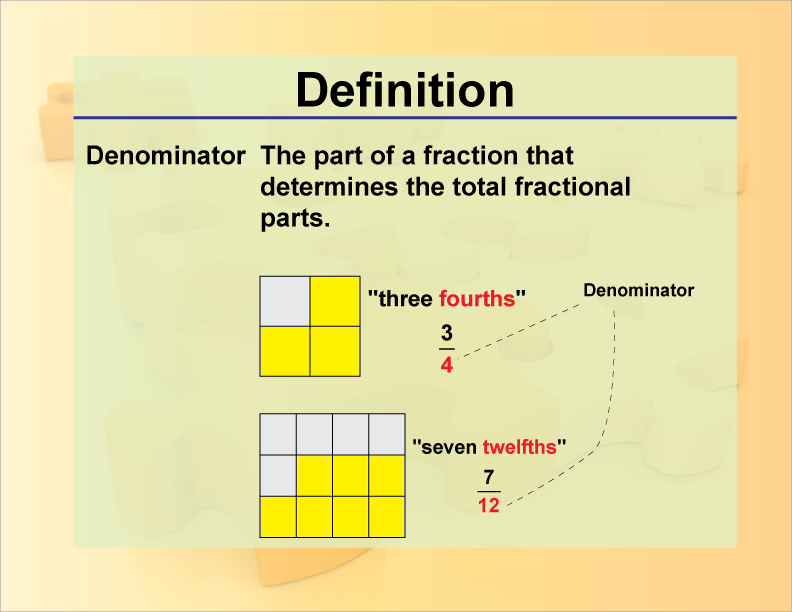
Display Title
Definition--Fraction Concepts--Denominator
Display Title
Denominator

Topic
Fractions
Definition
The denominator is the bottom number in a fraction that indicates into how many equal parts the whole is divided.
Description
In the context of fractions, the denominator plays a crucial role in understanding the size and division of the whole. It represents the total number of equal parts that make up a whole. For instance, in the fraction 3/4, the denominator is 4, indicating that the whole is divided into four equal parts. The numerator, which is 3 in this example, tells us how many of those parts are being considered.
Understanding the denominator is fundamental to grasping other fraction concepts such as equivalent fractions, simplifying fractions, and performing operations like addition, subtraction, multiplication, and division with fractions. For example, when adding fractions, having a common denominator is essential to combine the fractions correctly. Similarly, in multiplication and division, the denominators help determine the resulting fraction's size and proportion.
In educational settings, teaching the concept of the denominator helps students build a strong foundation in fractions, enabling them to tackle more complex mathematical problems involving ratios, proportions, and algebraic expressions. By mastering the role of the denominator, students can better understand and manipulate fractions, which are a vital part of the broader mathematical curriculum.
For a complete collection of terms related to fractions click on this link: Fractions Collection.
| Common Core Standards | CCSS.MATH.CONTENT.3.NF.A.1 |
|---|---|
| Grade Range | 3 - 6 |
| Curriculum Nodes |
Arithmetic • Fractions • Fractions and Mixed Numbers |
| Copyright Year | 2021 |
| Keywords | fraction, numerator, denominator |